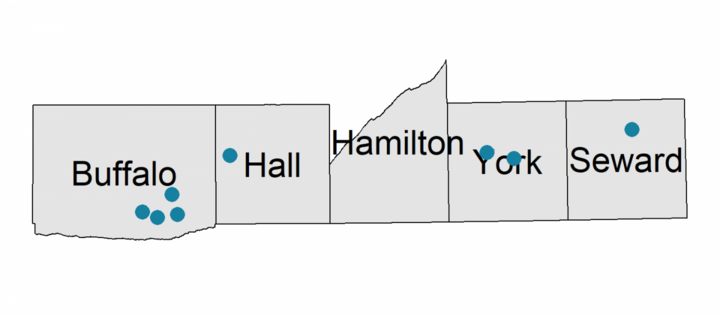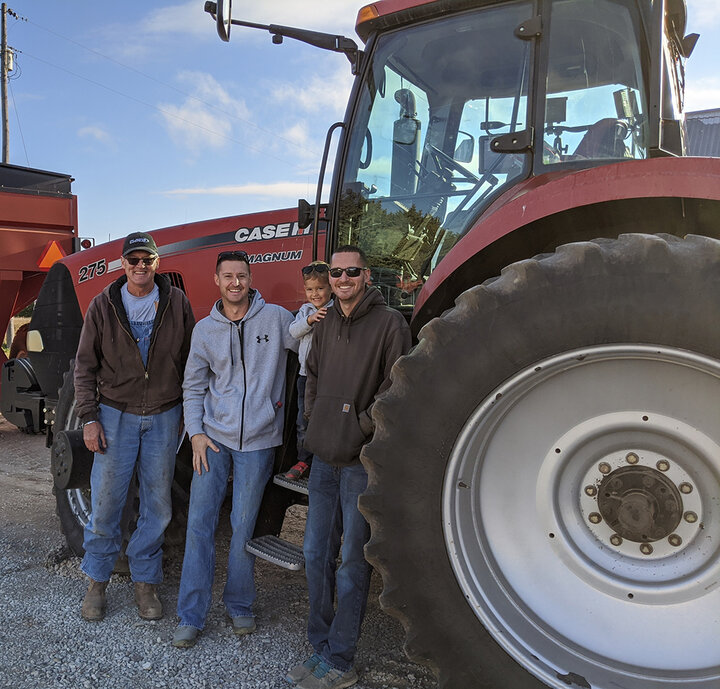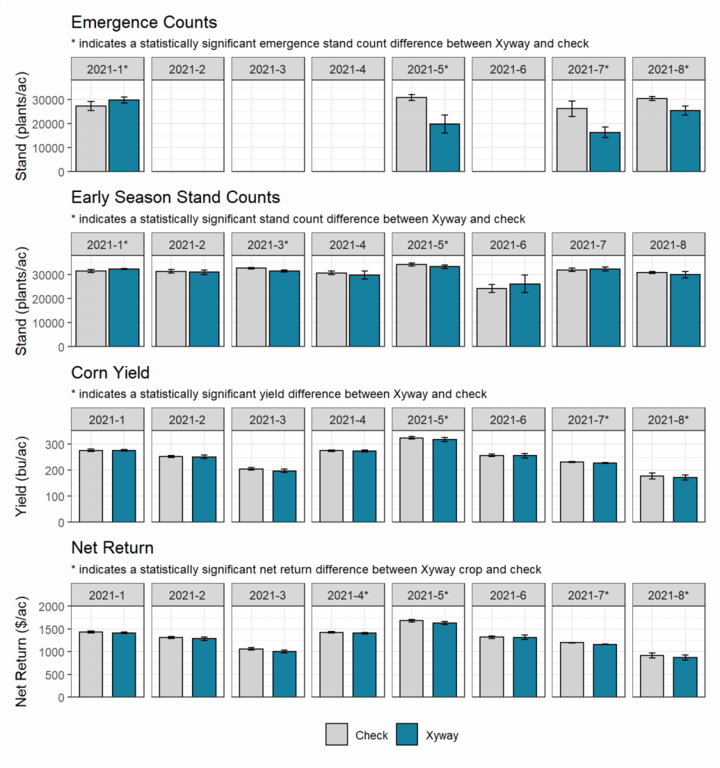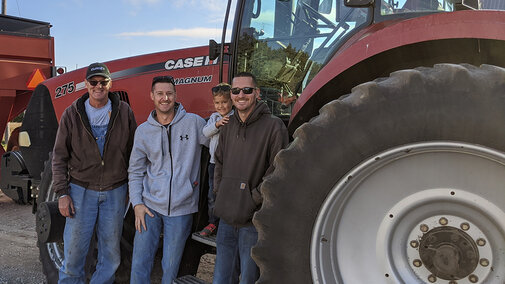Xyway™ LFR® (flutriafol) is a surface band or in-furrow fungicide applied at planting. The product is advertised as offering season-long control of foliar diseases in corn. Several producers in Nebraska evaluated Xyway™ LFR® fungicide in 2021, conducting a total of eight on-farm trials (Figure 1). Producers were interested in Xyway™ LFR® as an alternative to mid-season foliar fungicide applications, particularly where aerial applications are restricted or infeasible.
Trials were conducted by applying field-length strips with Xyway™ LFR® and comparing to strips without the product. The treatments were randomized and each site had a minimum of three replications. Data was collected to determine crop emergence (four sites), early-season stand counts, disease severity (two sites), yield, and marginal net return. Details of site location, planting date, irrigation, starter fertilizer used, and Xyway™ LFR® application method are available in Table 1.

| ID | Report ID | County | Planting Date | Irrigation | Starter Fertilizer (check treatment) | Application Method |
|---|---|---|---|---|---|---|
| 2021-1 | 1253019202101 | Buffalo | 5/1/21 | Pivot | 15 gal/ac UAN 32% | Surface |
| 2021-2 | 0908079202101 | Hall | 4/24/21 | Gravity | 3.5 gal/ac 10-34-0 | In-furrow |
| 2021-3 | 0802159202103 | Seward | 4/26/21 | None | 3.84 gal/ac 10-34-0 | In-furrow |
| 2021-4 | 0718185202102 | York | 4/29/21 | Pivot | 3 gal/ac 10-34-0 | In-furrow |
| 2021-5 | 1258019202101 | Buffalo | 4/26/21 | Pivot | 3 gal/ac Riser® | In-furrow |
| 2021-6 | 0118185202101 | York | 4/26/21 | Pivot | 4 gal/ac 10-34-0 | In-furrow |
| 2021-7 | 1121019202101 | Buffalo | 4/26/21 | Pivot | 3 gal/ac 10-34-0 | In-furrow |
| 2021-8 | 1255019202101 | Buffalo | 5/8/21 | Pivot | 4 gal/ac 10-34-0 | In-furrow |

Farmer Focus — Ron and Brad Makovicka
Ron Makovicka and his son, Brad, farm in York County and have been conducting on-farm research in their operation since 1998. They got involved in the Nebraska On-Farm Research Network through their local extension educator when they started questioning new products that were coming out on the market. This past year, Xyway™ LFR® was one of the products they were interested in learning more about. The Makovickas farm ground in a difficult to fly zone and were hoping that this product would be the solution they were looking for to prevent foliar diseases.
Ron appreciates being able to work with his local extension educator, Jenny Rees, to test products on his operation.
“That’s the best thing about having on-farm research, is the simple fact that you get to do it on a small scale,” Ron explained.
Disease Pressure
Overall, disease pressure was low in 2021. Because of this, disease severity was only recorded for two of the eight sites. The use of Xyway™ LFR® did not result in a difference in southern rust disease severity; however, grey leaf spot lesions were found to be held lower in the canopy in the Xyway™ LFR®-treated plots at one site.
Ron noted that it happened to be a year where they didn’t have much disease pressure but mentioned, “there might be one year where diseases will cost you more than what it costs to apply it [Xyway™ LFR®] over the years.” To some farmers, the opportunity to reduce the risk of yield loss from severe disease is worth the cost of applying the product each year.
Yield and Profitability Results

For three of four sites where emergence was evaluated, the Xyway™ LFR® treatment had slower emergence (Figure 2, panel 1). Early stand counts were collected for all sites — for the Xyway™ LFR® treatment, two sites had significantly reduced early season stand counts (2021-3 and 2021-5) and one site had a significantly increased early season stand counts (2021-1) (Figure 2, panel 2).
Yield was statistically lower in three of the sites (2021-5, 2021-7, and 2021-8), which corresponded to sites with reduced emergence counts (Figure 2, panel 3). Half of the sites had statistically lower marginal net return (2021-4, 2021-5, 2021-7, 2021-8) for the Xyway™ LFR® treatment (Figure 2, panel 4).
For the Makovickas, there were no statistical differences in yield, stand count or disease ratings between the Xyway™ LFR® and the check. While there was not a clear benefit to using Xyway™ LFR® on their operation this year, there also wasn’t a detriment and conditions weren’t optimal with a dry summer and low disease pressure. This points to an opportunity to test the product again in different growing conditions.
Join the On-Farm Research Network
On-farm research can be a useful tool to determine what is the best fit for your farm. Are you interested in trying a new product on the market or another practice on your farm? The Nebraska On-Farm Research Network can help you conduct a study on your farm, using your growing conditions, to obtain results of which you can be confident.
Is something new or different going to work on your operation? Ron noted that having the results of your own on-farm research “makes an easy choice for the next year.”
Contact a member of the team to get started with an On-Farm Research study of your own.
The Nebraska On-Farm Research Network is a collaborative partnership that includes Nebraska Extension, the Nebraska Corn Board, the Nebraska Corn Growers Association, the Nebraska Soybean Checkoff and the Nebraska Dry Bean Commission.
You can see the full results for all of the Xyway™ LFR® studies conducted in 2021 in the Nebraska On-Farm Research Network results publication on pages 184-193, with study IDs corresponding to those in Table 1.

